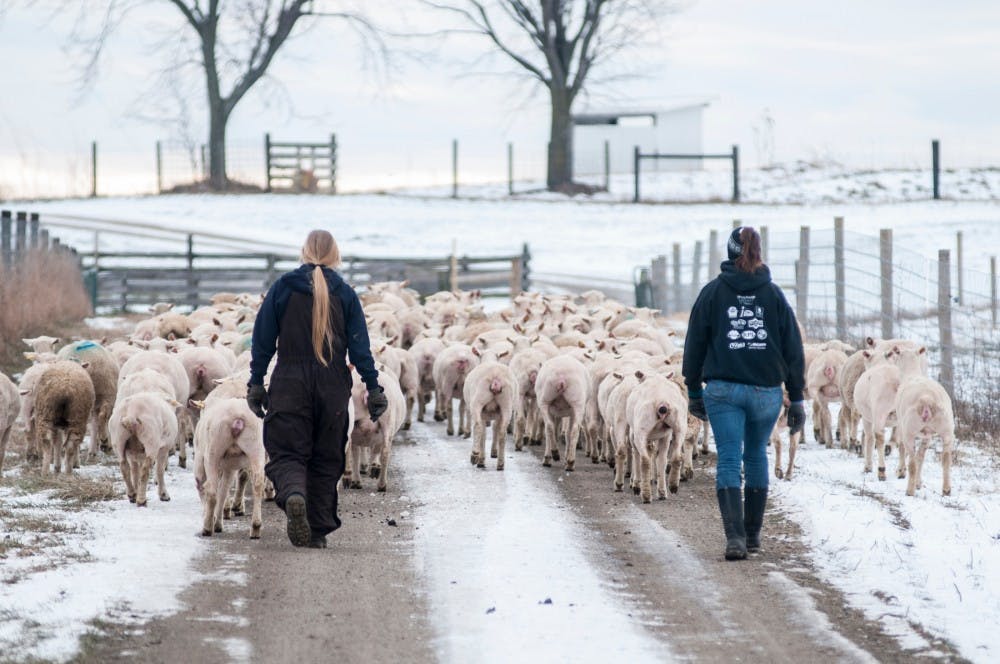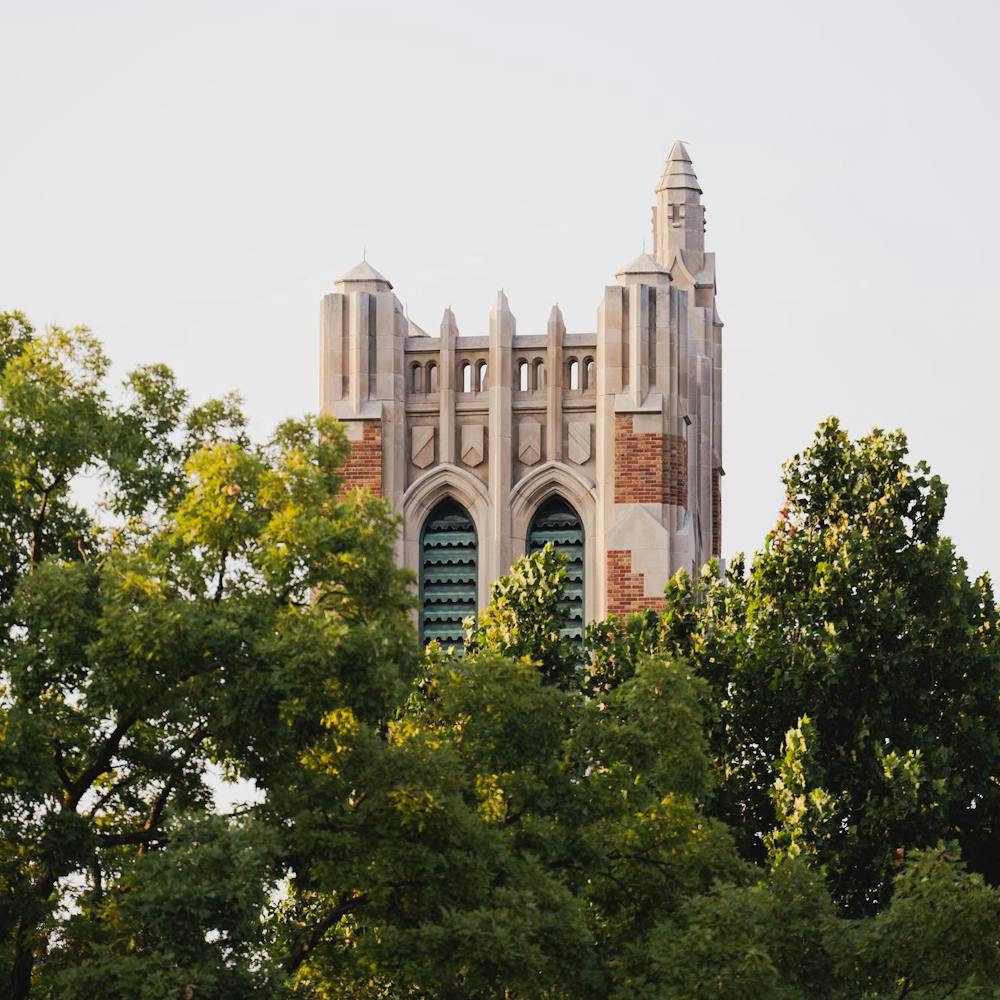About 15 feet away from agribusiness management junior Emily Hale’s bedroom is a barn full of sheep.
The bleating sheep wake her up every three to four hours for night checks during lambing season. It’s Hale’s responsibility to aid the restless sheep, whether or not she has class in the early morning or plans for the weekend.
It’s different. It takes awhile to adjust. Ewe get used it.
But hey, that’s life living at the sheep farm.
The first MSU sheep farm was built in 1865. The facility is home to award-winning research initiatives and sheep breeds. The current facility, on South Hagadorn road, was established in 1960.
Students have been living on the farm since then. Former farm manager George Good, who managed the farm from 1969 to about 10 years ago, said students were needed for 24 hour security and lamb checks.
Down on the farm
Hale worked at the farm for a year before living there. She’s called the barn home since August of last year.
“I live in a barn, and it’s not exactly the cleanest all the time,” Hale said. “Sometimes you get woken up by sheep. It’s got its quirks.”
Hale said it’s hard to escape the smell after living there for so long. She takes the barn’s scent wherever she goes.
“You become immune to it while you’re here,” Hale said. “I’ll smell it in class sometimes ... and when I go home my mom washes all my clothes. I have a lot of candles going to combat the smell.”
Working with sheep runs in Hale’s family. Growing up on a family sheep farm, Hale chose to live at the barn to continue working with the animals at school.
“I grew up on a sheep farm, so I knew some stuff about it,” Hale said. “But there’s more responsibility here.”

A rich tradition
MSU alumnus Bill Sheridan lived in the barn when the concrete was first poured for farm additions in 1969.
“There wasn’t much room in there for more than two people,” Sheridan said. “I had several roommates and only two of us at a time was cramped.”
Despite their snug conditions, Sheridan said they learned a lot from each other about lambing and rooming. He and his former roommates left behind their handprints and initials in the barn’s cement.
“I learned early on that the sheep industry can be challenging,” said Sheridan.
MSU Department of Animal Science academic specialist Daniel Kiesling, who is also a livestock judging coach, lived in the barn from 2001-03. He lived in the apartment with two other roommates his first year. With limited space available, they had to use closets in classrooms across the hall, which made changing, showering and privacy difficult.
“It was a pretty private place, but it’s open to the public during the day,” Kiesling said. “You had to make sure you took everything with you and weren’t walking around in your skivvies in case visitors were around.”
After living there long enough his clothes began to smell like the sheep barn. He and his roommates stuck air fresheners in their pockets to make their clothes smell better.
Lambing season

Lambing season is an important part of living at the farm. The season brings new lambs that need to be fed and kept warm throughout the night.
“3 a.m. lamb checks will really take the wind from your sails,” animal science junior David Scales, who lived in the barn during his sophomore year, said. “During lambing season, you just accept the fact that you will be sleep deprived for about three weeks.”
During lambing season, the residents wake up at odd hours of the night and early morning to check for newborn lambs, affecting their academic and social lives.
“Whether or not you have dinner or party plans, you have a big responsibility and schedule around it,” Kiesling said.
The challenges of lambing season have not changed much since the early years of the barn. Sheridan and Hale both said lambing season is as rewarding as it is challenging.
“I had 8 a.m. classes, and if I was up with an ewe having trouble, I’d have to deal with it,” Sheridan said. “My roommate helped me out on those late nights.”
In the fall semester, Hale and her roommate alternated nights and determined a schedule for the fall lambing season. This spring, Hale, who is living by herself, will deliver an estimated 130 lambs.
Leaving their mark
Students who come through the farm sign their names and year of residence underneath their lofted beds.
The exact origin of the tradition of signatures is unknown. Numerous renovations have covered up previous signatures.
Daniel Kiesling’s brother, Perry High School teacher Brian Kiesling, lived in the barn fall 1998 when signatures were already present.
“It’s kind of like, ‘Why do students paint the rock at MSU?’” Brian said. “It’s just a way of leaving something behind.”
Hale looks forward to leaving her signature near her sister’s when she moves out.
“It’s a sense of pride and accomplishment because it’s the end of your stay,” Hale said. “You’ve seen it all and done it all at the farm.”







